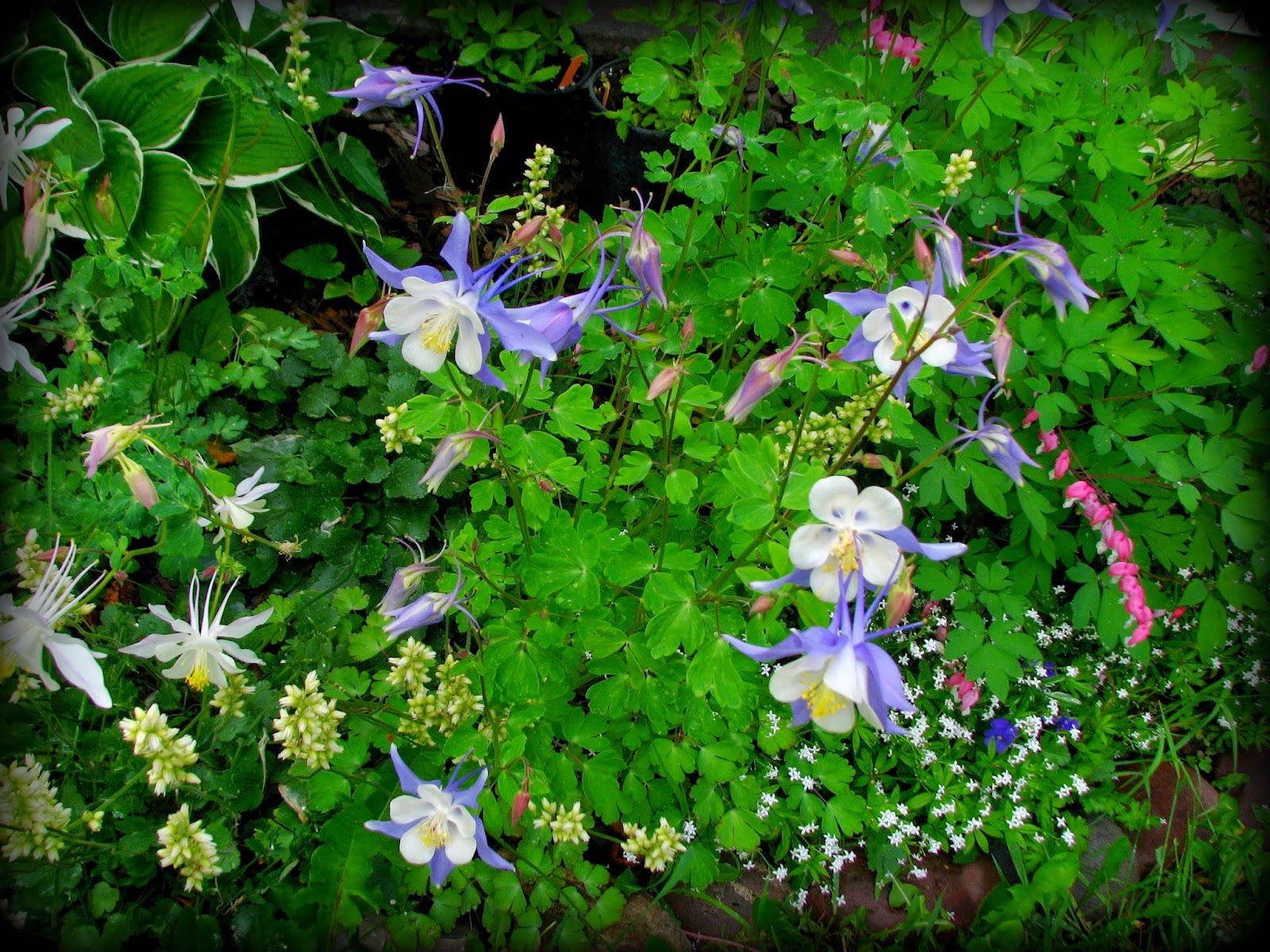Aquilegia sp.
Ranunculaceae (Buttercup Family)
Quick ID
| Ternately divided leaves |
 |
| Pod-like fruits |
 |
| Meadowrue - same leaves, different flower |
There are many species of Aquilegia in the US (five in Montana), with lots of varieties within themselves, and the species have a tendency to hybridize with each other as well. That being said, color is not always a great way to tell species apart. The morphology of the spurs and where the plant is found growing can provide better clues.
Range
Look for columbines in moist meadows and forests. In Montana, A. coerulea has a smaller, more southerly range (extending from the lower quarter of the state and down to New Mexico) and prefers shadier sites. A. flavescens can take more sun, and is pretty widespread in high elevations throughout western and central MT, on down to Utah and Colorado.
What's in a Name?
 This plant is totally named for its looks. Aquilegia probably comes from the Latin aquila, "eagle," for the spurs that look like talons. Other sources claim the genus is derived from aqua (water) and lego (to collect), for the spurs' resemblance to ancient water urns. The species name coerulea is quite common in the plant world, and means blue, while flavescens (and its equally common root flavens) means yellow. The name "columbine" itself comes from the Latin word for dove, columba. People say the flower looks like five little doves sipping from a water bowl together, tails poking towards the sky.
This plant is totally named for its looks. Aquilegia probably comes from the Latin aquila, "eagle," for the spurs that look like talons. Other sources claim the genus is derived from aqua (water) and lego (to collect), for the spurs' resemblance to ancient water urns. The species name coerulea is quite common in the plant world, and means blue, while flavescens (and its equally common root flavens) means yellow. The name "columbine" itself comes from the Latin word for dove, columba. People say the flower looks like five little doves sipping from a water bowl together, tails poking towards the sky.
Tidbits
Columbines are pollinated by hummingbirds and hawk moths, who can reach deep into the flower to get at the nectar. I've also seen plenty of bumblebees in my garden burrowing down into the tubes. Growing up in Minnesota, red columbines (probably A. canadensis) were common, but we always knew them as "honeysuckles." Indeed, it was my favorite thing as a wee one in the woods, to bite off the sweet little nectar-filled spur tips of these flowers. Of course now I know that, like all these Ranunculaceae characters, Aquilegia can be pretty poisonous. Eating a large enough quantity of the seeds, especially, can be dangerous and even fatal. These toxic little seeds have been used in the past as a parasiticide to treat lice infestations as well. Beautiful and deadly...
Wild Gardening
 |
| A. coerulea fitting into a shady woodland garden nicely, along with alumroot (Heuchera cylindrica), hosta, bleeding heart and bedstraw (Galium odoratum) |

